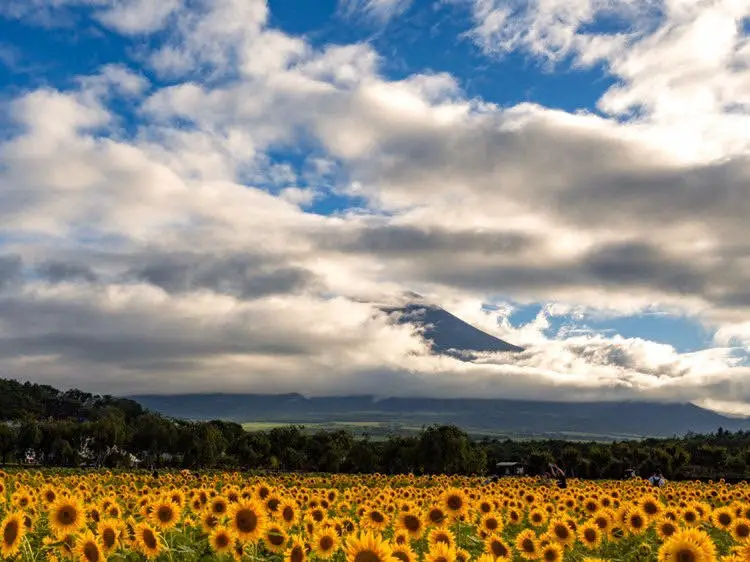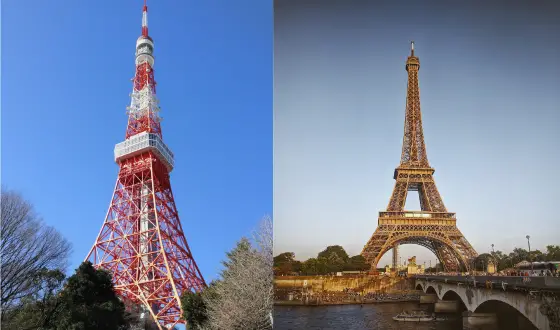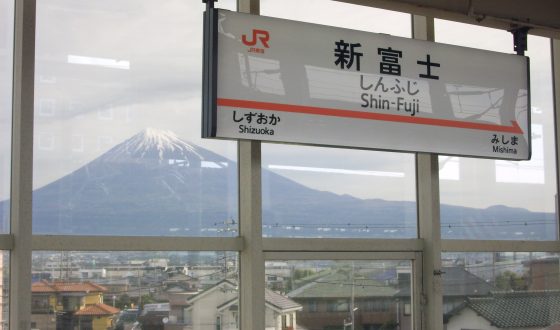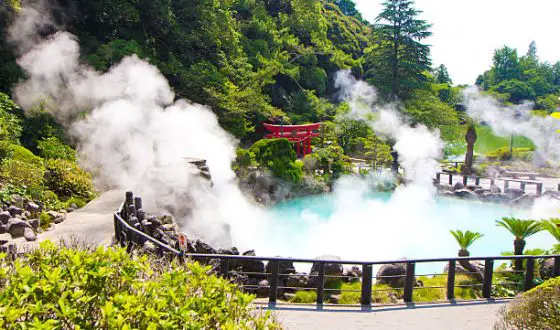Climbing Mt Fuji: First-time Tips For Foreigners
Listed in the book “100 Things to do Before You Die”, climbing Mt Fuji is high on every traveler’s bucket list. In fact, thousands of people flock to Mt Fuji every year in hopes of conquering the most iconic symbol of Japan. Reaching the summit to see the sunrise – also known as “goraikou” is definitely one of the best highlights when traveling in the Land of the Rising Sun. To help you along the way, here’s our beginner’s guide to tackling this most sacred of mountains.
Everything you need to know when climbing Mt Fuji
About Fuji
Stretching 12,388 feet tall and forged over millions of years, Mount Fuji is the highest mountain in Japan and also a scorching sea of volcanic ash. In ancient times, Fuji was considered home to divinities. Today, it endures as a national symbol.
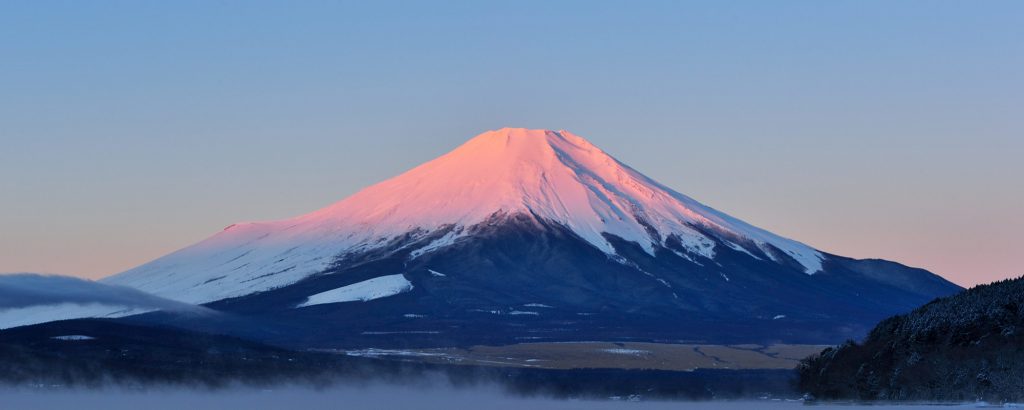
Underneath its silent beauty simmers a destructive force
Climbing Mt Fuji remains one of Japan’s most sacred traditions. On a clear day, you can see the mountain from anywhere in Tokyo and it just looms over the whole city. There’s no time like the present to decide to take up the challenge!
When to Climb Mt Fuji
Official Climbing Season
Fuji’s official climbing season runs from early July to mid-September. It is advisable (especially for unfrequent hikers) to head in Mt Fuji during this time when the trails and mountain facilities are open and weather conditions are fairly stable. You are probably promised snow-free days and relatively mild weather. Also, access by public transportation won’t creat any trouble.
The specific dates depend on the year and trail. In recent years they have been set as follows:
Yoshida Trail: July 1 to September 10
Subashiri, Gotemba and Fujinomiya Trails: July 10 to September 10
Peak time
Peak time tends to be from around July 20 to the end of August when schools are on holiday. If you want to avoid the worst of the crowds, aim for a weekday and skip the Obon holiday period—from Aug 13-15 for 2019—entirely. Also, some mountain huts also charge higher prices for the weekend.
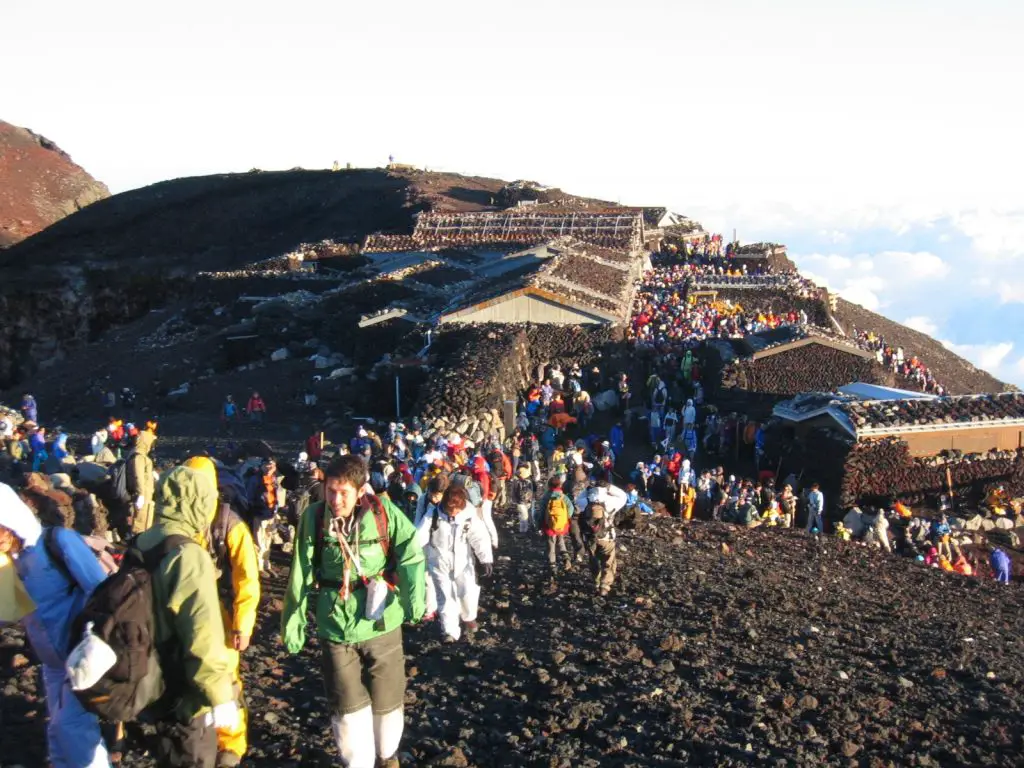
Climbers literally have to stand in queues at some passages
Off-Season
Outside of the official climbing season (from October to around mid-June), climbing Mt Fuji is highly perilous due to extreme wind and weather conditions, snow, ice and risk of avalanches. In addition, public transportation is considerably less frequent or non-existent .
So don’t risk if you’re not hikers with much experience!
Trails
Once you finish choosing the time, you can start to pick your Mt. Fuji trail.
There are four different trails you can take to reach the summit of Mt. Fuji: Yoshida (orange), Subashiri (red), Gotemba (green) and Fujinomiya (blue). Each trail is divided into ten stations with the first station at the foot of the mountain and the tenth station being the summit.

There are four 5th stations on different sides of the mountain.
For more details, please check the table below:
|
Yoshida Trail Ascend: 6 hours Descend: 4 hours Level: Beginner Description: The most popular route, and therefore the crowdest; different ascent to descent. |
Subashiri Trail
Ascend: 6 hours Descend: 3 hours Level: Experienced Description: More varied views; starts in a forested section. |
|
Gotemba Trail Ascend: 7 hours Descend: 3hours Level: Veteran Description: Long ascent but the most fun descent sliding down the volcanic gravel. |
Fujinomiya Trail Ascend: 5 hours Descend: 3 hours Level: Beginner Description: The shortest route to the top and second-most popular; a steep, rocky ascent. |
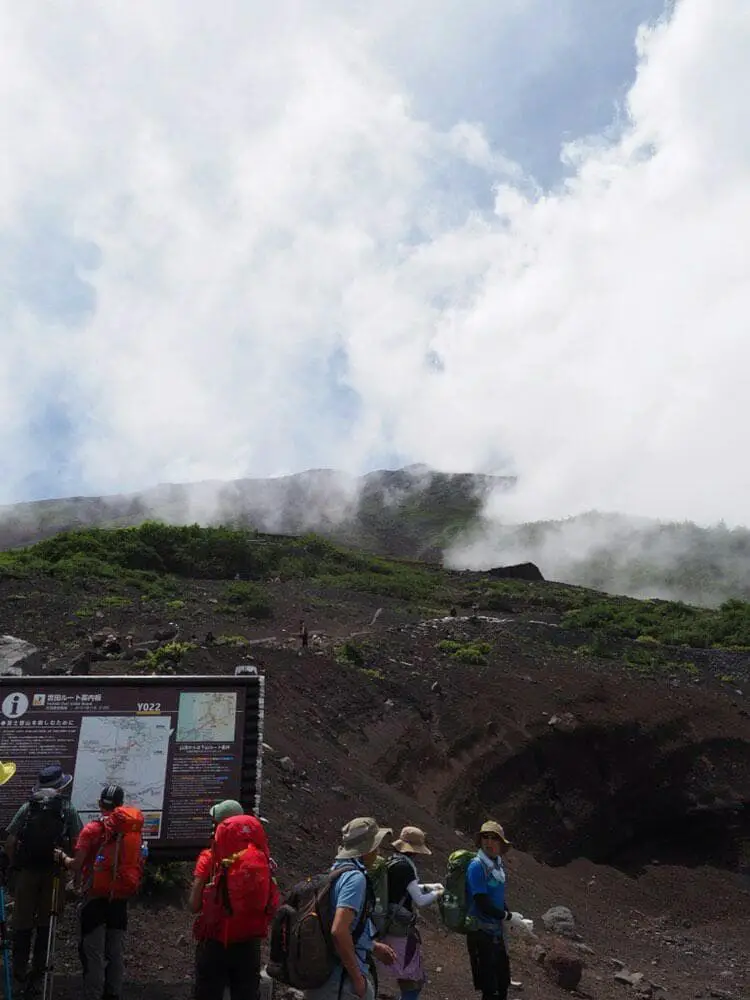
Signposts along the road assist hikers in tracking down their trails.
As you can see, Yoshida trail which is equipped with the most support facilities would be the top selection for first-time climbers. In case you are looking for a more challenge or quieter climb, you might want to try other routes.
Note: No matter which trail you take, you need to reach the 5th Station first since it’s the starting point for the ascend.
How to climb Mt Fuji
Difficulties
The ascent to the summit does not pose any major difficulties regarding climbing skills. You just need to pay more attention to steep terrains, sudden wind gusts and falling rocks at some points. The main challenge of the climb is descent. In fact, the majority of accidents happen on the way down thanks to a combination of fatigue, adrenaline, and gravity!

Climbing down is twice as hard as ascending because of the rocky, steep terrains
As you can see (from above), there’s no pole on the side available for holding onto, and no rocky steps to ease and facilitate the process of descending.
So don’t rush, climb slow and steady! In case you’re suffering from sickness or injuries sustained during the climb, don’t freak out! You can approach medical centers, especially on the Seventh and Eighth Stations for help.

Medical stations are onsite
Besides, keep in mind that Mt Fuji experiences unpredictable weather. This means that unexpected thunderstorms, rain downpours, snowstorms, hails storms, etc. are common. Moreover, wind conditions vary, and you might experience temperatures close to zero or even lower while ascending or descending.
SEE MORE:
How long to climb Mt Fuji
The next question is how long does it take to climb Mt Fuji?
Whichever trail you’ve chosen, you’ll be able to get a bus to the fifth station and continue from there on foot. The ascent can take anything from 5-10 hours depending on the trail you choose, your level of fitness and how many breaks you take while the descent will only take about half to two-thirds the time of your ascent.
Note: If you’re already in the 8th Station, it takes only about 90 minutes to climb to the top. Besides, it may feel like an eternity while climbing from the Sixth to the Seventh Station but there’re seriously some great views while making our way to the Seventh Station!
Then there’s the question of what time to start climbing. Hiking Mt Fuji in a day is possible if you start early, but if you don’t want to miss the chance to watch the sunrise from the top of a mountain, here are the best two options that you may consider: start in the early afternoon and rest at a mountain hut at the seventh or eighth station in the evening before heading to the summit after midnight, or starting in the late evening and powering through to the top without a long break.
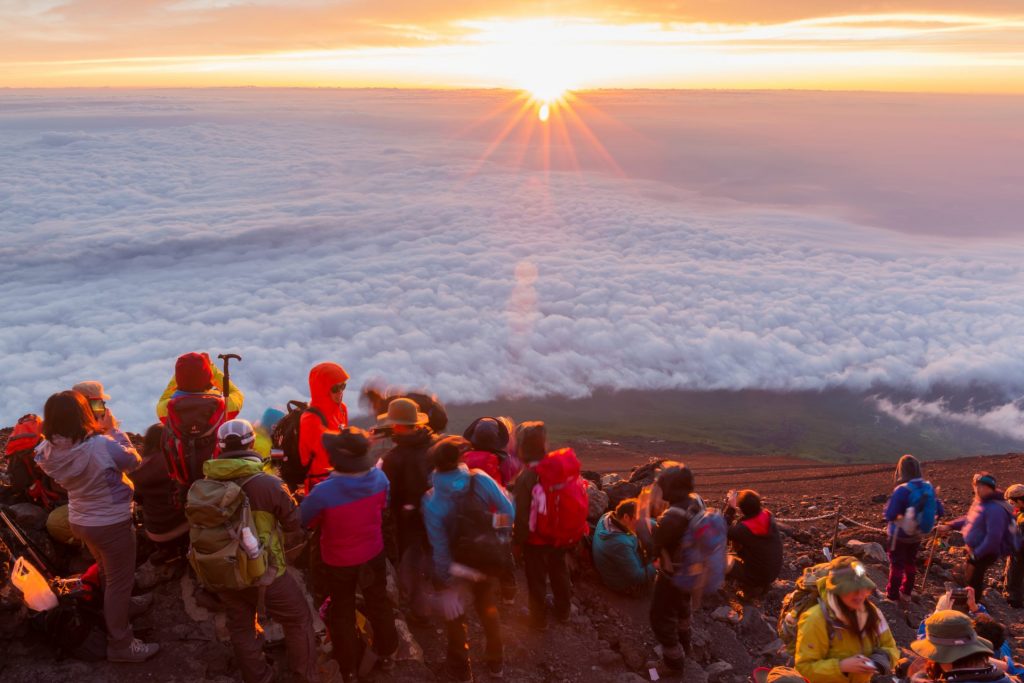
How long does it take to climb mount fuji? It depends on your trail.
Mountain huts
If you decide to stay in a mountain hut, it’s highly recommended to book one in advance, especially at peak times because you won’t want to be stuck in the middle of nowhere. Bear in mind that camping overnight is strictly not allowed.
The Yoshida Trail is lined by more than a dozen mountain huts between the 7th and 8th stations. Other trails have fewer mountain huts. All huts take bookings over the phone (in Japanese) and these days several also allow you to make reservations online (in English and Japanese).
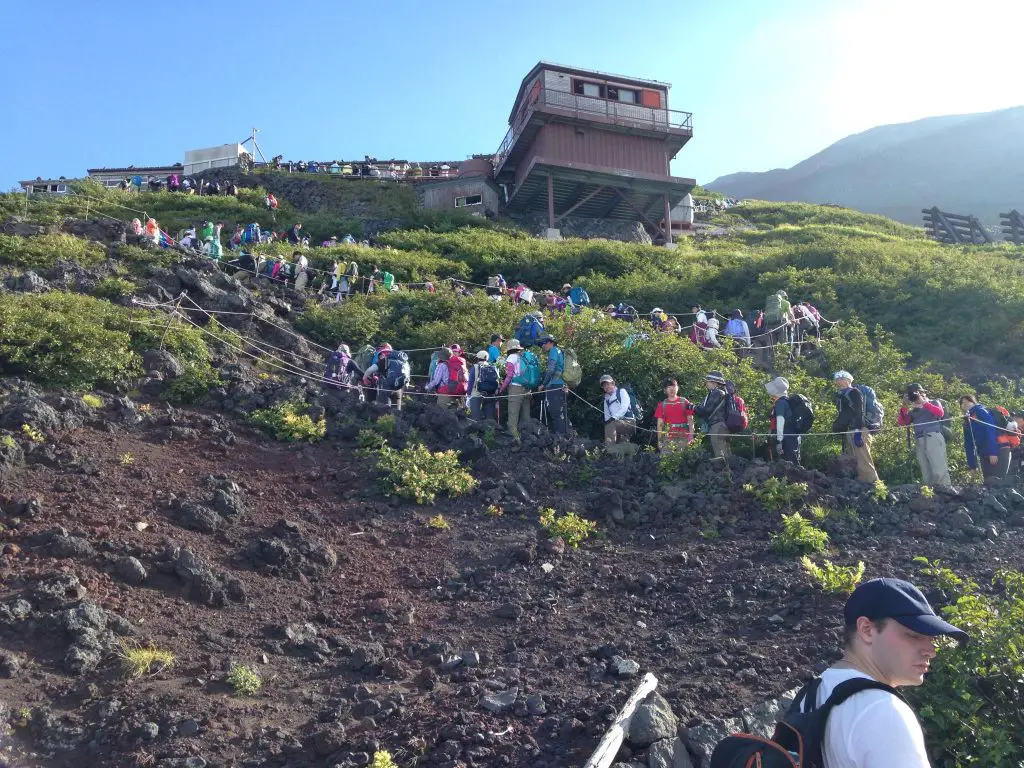
Expect the huts to be extremely crowded during the peak
Costs range from around ¥6,500 for a sleeping bag in a shared room to ¥11,000 for a sleeping bag in a semi-private space with breakfast and dinner included. Some mountain huts also allow non-staying climbers to take a rest inside at a cost of typically ¥1000-¥2000 per hour.
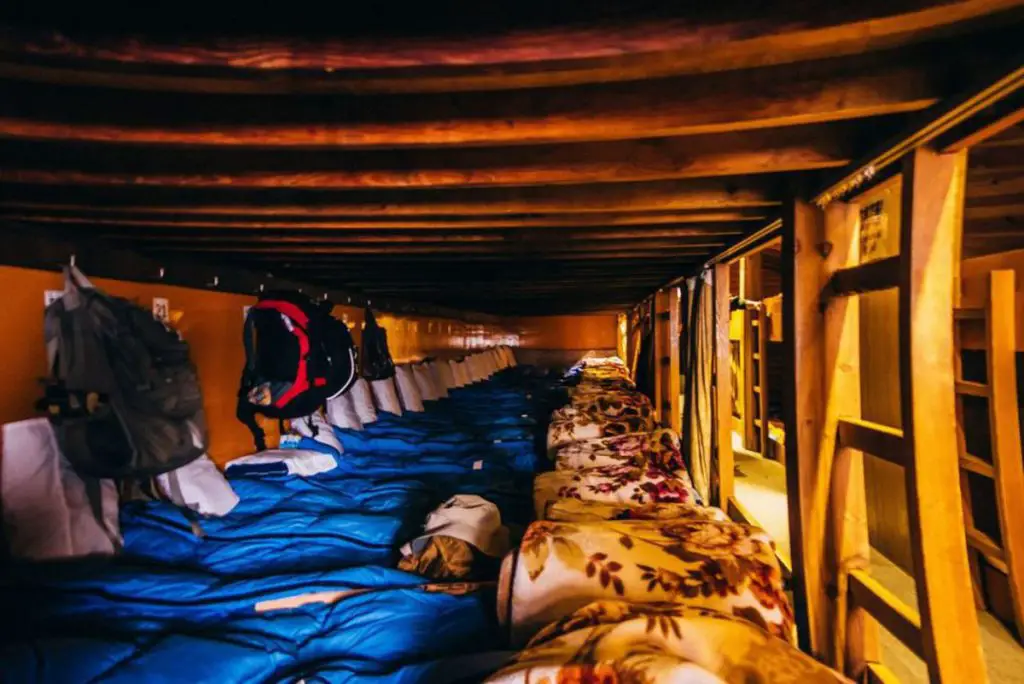
Shared-room is the most reasonable space in mountain huts
Do not expect too much because only basic foods are available, usually curry or noodles. Dinner will usually be served around 5 p.m., with lights out at 9 p.m.

Mountain huts offer basic meals and drinks
Most huts also have small shops where you can purchase supplies such as food, water, and oxygen canisters—albeit at greatly inflated prices.
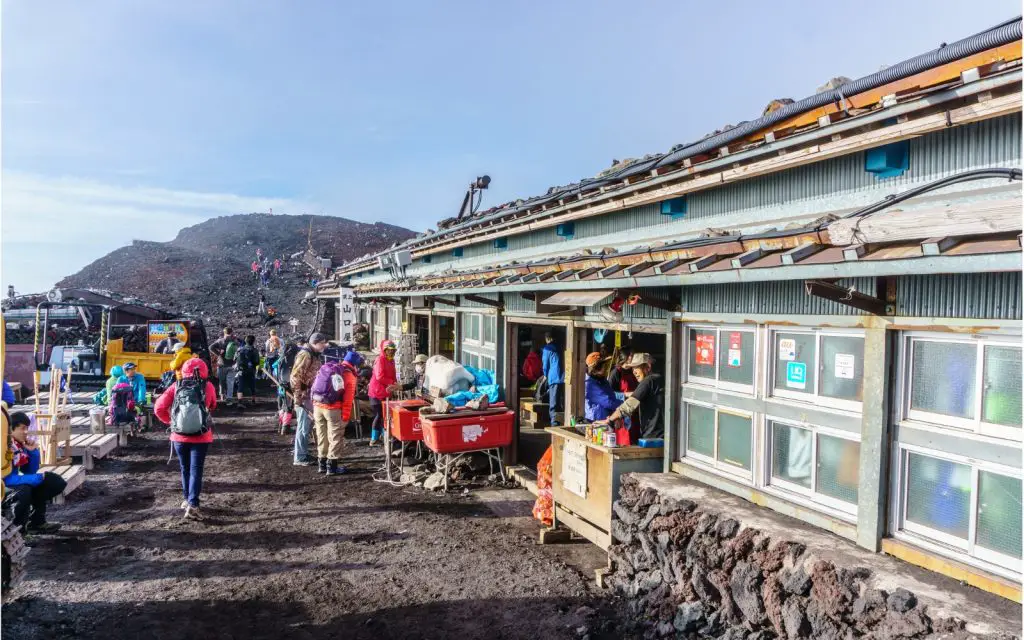
Shops provide basic products in every mountain huts
One thing that should be noted down is you have to pay for using restrooms on Fuji. Not only that, but costs increase as you go higher up the mountain. Factor in between ¥200-¥300 per bathroom break you take. Only cash is accepted as a form of payment.
Note: Approximately 1USD = 100 ¥
Climbing equipments
Proper Clothes
Bring proper protection against low temperatures and strong winds. Dress in layers to easily add or remove to keep you comfortable. If you’re aiming for the ultimate sunrise view, be aware that the pre-dawn temperature at the summit can drop to around 0℃ (32℉) and you’ll feel a lot chillier when you’re not moving.
Bring rain gear even if there’s not a cloud in sight when you set off as weather conditions can change very quickly on the mountain.
Appropriate shoes are a must, preferably with ankle support. Gloves are recommended both against the coldness and for hiking the steep, rocky passages.
Flashlight
If you’re climbing Mt Fuji at night, a flashlight is highly recommended in any season and essential outside of the peak season when the trail is not illuminated by other hikers. Most people choose headlamps, as they leave both of your hands free.
Hiking Stick (optional)
Trekking poles which are sold at all the 5th stations (except Gotemba) with the price of about 1500-2000 yen can also be useful, especially on the descent. A more reasonable purchase is wooden pilgrim staff which you can have branded with unique stamps at each station (for a few hundred yen each), and which also makes a fantastic memento of your climb.
Compressed oxygen (optional)
If you suffer from altitude sickness compressed oxygen can really help alleviate some of the dizziness or shortness of breath. Cans are available at the 5th station.
Food and water
Climbing Mt Fuji is no mean feat, so you’ll want plenty of fuel to keep you going. Food and water are sold at every stations, but this will be very expensive so it’s preferable to stock up before.
The recommended amount of water is 2L, but feel free to pack more than that if you are able to carry the weight. Keep in mind that there are no trashcans on Fuji, so you will have to carry all plastic bottles with you along the way.
Furthermore, water for shower and hand washing is not available since water is very precious on the mountain. So, bring enough water and hand sanitizer!
Altitude Sickness
Scientifically, human body requires some time to adjust to a sudden increase of altitude, otherwise, there is a risk of headache, dizziness and nausea. Quite a few people when climbing Mt Fuji, suffer from altitude sickness.
Tackling the mountain at a slow pace and taking regular breaks will help you avoid altitude sickness. When you reach the fifth station, it is also recommended to wait 30 minutes or an hour before starting the climb. An overnight stay at a hut around the 7th or 8th station to give your body enough time to acclimatize to the higher altitude is worth to consider. Small bottles of oxygen, available at the 5th stations and mountain huts, can be an effective tool in preventing and fighting altitude sickness.
If you do get sick, go back down, even if it’s just a few hundred meters. You can then wait an hour and see if the symptoms pass, you can try for the summit again.
SEE MORE:
- Osaka vs Tokyo – A Walk-Though Of Two Super Cities
- 15 Best Cities To Visit In Japan – A Comprehensive Guide
How to access
Access by bus
As mentioned previously, there are 4 main trails leading you to the top of the peak: Yoshida Trail, Fujinomiya Trail, Gotemba Trail, and Subashiri Trail.
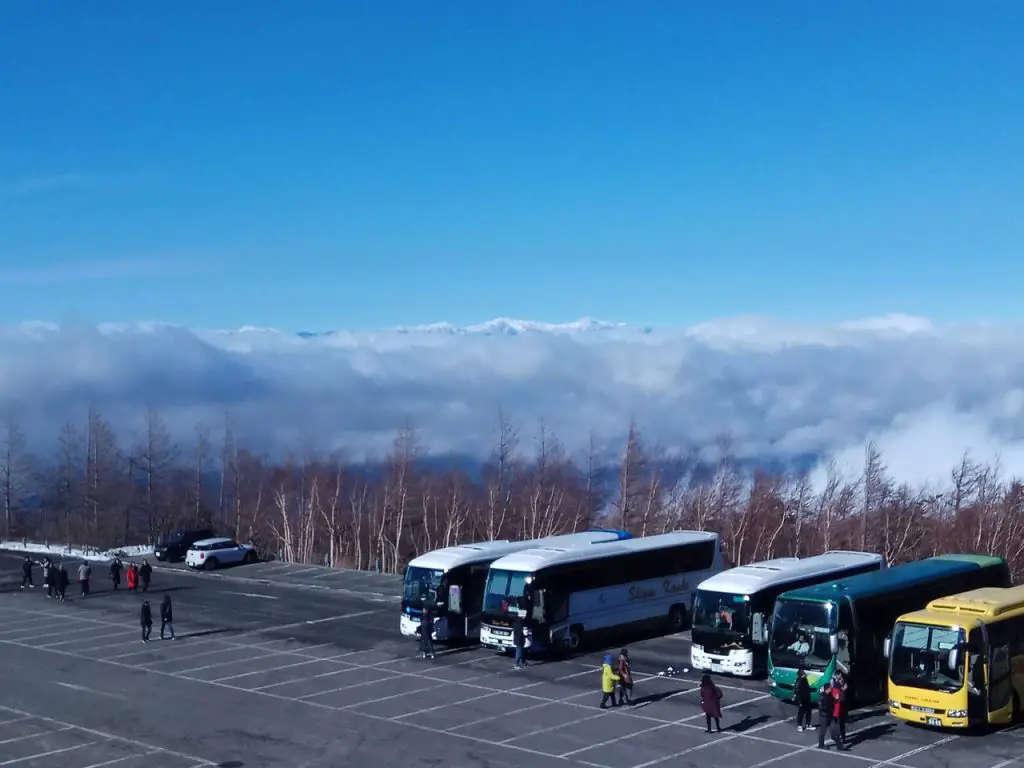
Accessing by bus is quite easy and convenient
|
Buses to Fuji Subaru Line 5th Station: From Fujisan/Kawaguchiko Station: 1540 yen (one way), 2300 yen (round trip), 50 minutes 1-2 buses per hour during the climbing season |
Buses to Subashiri 5th Station: From Gotemba Station: 1540 yen (one way), 2060 yen (round trip), 60 minutes 10 round trips per day during the climbing season 3 round trips per day on off-season weekends and holidays |
|
Buses to Gotemba 5th Station: From Gotemba Station: 1110 yen (one way), 1540 yen (round trip), 40 minutes 6 round trips per day during the climbing season 3 round trips per day on off-season weekends and holidays |
Buses to Fujinomiya 5th Station: From Shin-Fuji and Fujinomiya Stations: 2380 yen (one way), 3100 yen (round trip), 150 minutes from Shin-Fuji Station 2030 yen (one way), 3100 yen (round trip), 110 minutes from Fujinomiya Station |
From Shinjuku Station (Tokyo):
If you’re planning to get to the Yoshida’s Fifth Station by the highway bus, it takes 2700 yen/one way and normally 150 minutes to get to the station. There are 8-12 round trips/day during the climbing season and 2 round trips/day during the off- season.
Following is the detailled directions to Shinjuku Expressway Bus Terminal:
First, take the JR train to Shinjuku Station.
Once you arrive at the JR Shinjuku Station, head to the South exit. Just walk to the NewoMan building located right across the street.
Then, make your way to 4F (4th floor). You will see signage that direct you to the Bus Terminal.
And there you go!
Access by car
Be careful that the access roads to the Fuji Subaru Line 5th Station, the Subashiri 5th Station and the Fujinomiya 5th Station are closed to regular cars for certain periods during the climbing season. So remember to check the bus schedule before taking your trip.
Conclusion
At 3776m/12,388ft hiking Mount Fuji is characterized by serious elevation gain, rapidly changing extreme weather, steep inclines, and long switchbacks. It is risky but I’m sure it worths to challenge yourself.
Is there anything else you want to know about climbing Mt Fuji? Let us know in the comments!

